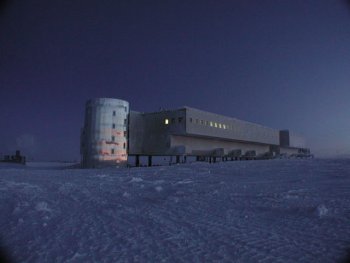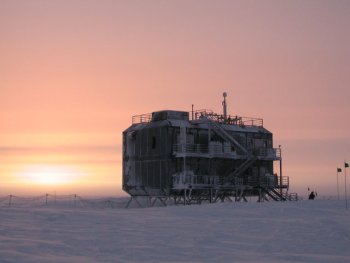
Americans have occupied the geographic South Pole continuously since November 1956 as part of the International Geophysical Year of 1957. The original South Pole station was constructed by a United States Navy crew during 1956-1957. As interest in polar research increased, it became evident that a new design and a larger station was necessary.
In 1975 the central area of the station was rebuilt as a geodesic dome 50 meters wide and 16 meters high. Large steel archways covered modular buildings, fuel bladders, and equipment. Detached buildings housed instruments for monitoring the upper and lower atmosphere and for numerous projects in astronomy and astrophysics.
The dome facility was designed to house 18 science and support personnel during the winter and 33 during the austral summer. However, over the years, the facility's infrastructure and technology exceeded its design and operational life. In 1997, a redevelopment plan to upgrade the station began. The new station is one connected, elevated facility. To accommodate changes in population from winter to summer, certain areas can be closed.
Remote science facilities, such as the Atmospheric Research Observatory (ARO) are being developed with small one- to two-story elevated buildings and are located away from the main station to minimize interference between necessary operations and science.
Some 50 scientists and support personnel winter at the station, and up to 150 people work there during the summer. The station's winter personnel are isolated between mid-February and late October.

The South Pole Geodesic Dome at twilight.

The new Amundsen-Scott South Pole station

The Atmospheric Research Observatory, where GMD makes it's measurements.